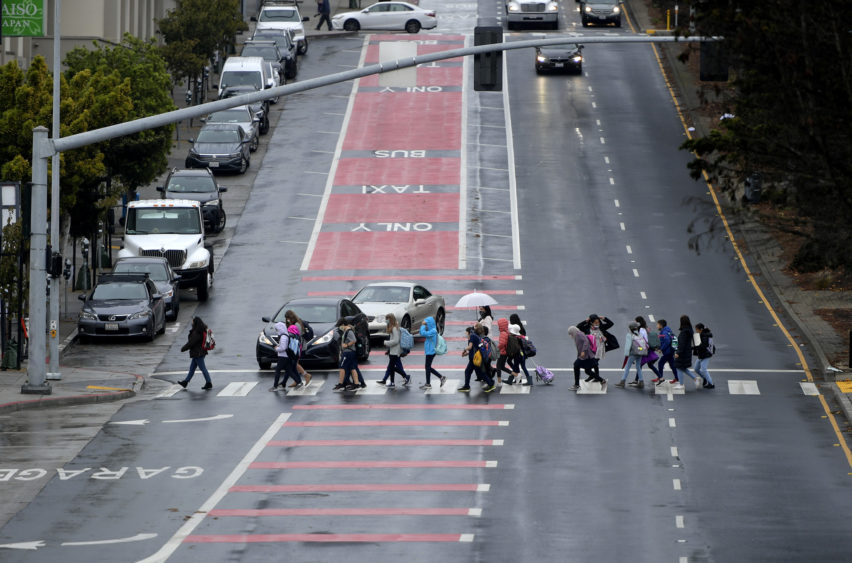It was a wet Wednesday afternoon at Japantown’s Peace Plaza when San Francisco leaders cut the ribbon to celebrate completion of the Geary Rapid Project.
Officials say the project will improve pedestrian safety and transit service on the 38R-Geary, where some stops were eliminated to speed up travel time, and 38-Geary.
Highlights include new red transit-only lanes and pedestrian crossings, as well as upgrades to sewer and water lines in partnership with the Public Utilities Commission and other city agencies.

The project area spans a 3-mile stretch of Geary Boulevard, east of Stanyan Street.
Jeffrey Tumlin, the San Francisco Municipal Transportation Agency director of transportation, spoke Wednesday and acknowledged the ugly history for some city residents who lived in neighborhoods like the Fillmore and Japantown along Geary.
Japanese residents were sent to internment camps during World War II, and Western Addition redevelopment in the 1950s, which made way for the eight-lane Geary Expressway, displaced residents and destroyed Black-owned and Japanese-owned businesses.
Tumlin explained that the project was intended to right some wrongs suffered by residents in the last several decades, adding:
“This project is designed in a small way to help with the healing to help restore the connectivity between Japantown and the Fillmore.”
A new signalized pedestrian crossing at Geary Boulevard and Buchanan Street reconnects Fillmore and Japantown communities, and serves as a safe entry to the Peace Plaza. Japantown can now be accessed by a signalized intersection at Geary Boulevard and Webster Street.

Mayor London Breed recognized the community divide when Geary became a freeway-like corridor, adding:
“What we are trying to do in correcting the mistakes of the past is build those bridges and make them stronger, both with the people but also with the infrastructure.”
Some project portions were completed in 2018 through the SFMTA’s “quick-build” process that allows the agency to expedite work by avoiding normal bureaucratic hearings and approvals processes.
Earlier implementation resulted in 20 percent time savings for passengers on the 38R, officials said. The 38 routes are Muni’s busiest, carrying more than 56,000 passengers each day before the pandemic.
Work began in 2019 to upgrade utilities, pave roadway, add transit bulb-outs and install the transit signal priority system, which helps maintain a green light for buses approaching intersections.

Additional project work included new curb ramps, pedestrian countdown signals at some intersections and pedestrian signal retiming to allow more time to cross the street. The number of travel lanes were reduced from four to two lanes with one transit-only lane in each direction.
The agency will next tackle the second phase of the Geary Boulevard Improvement Project, which focuses on side-running transit-only lanes along Geary between 33rd Avenue and Stanyan Street.
